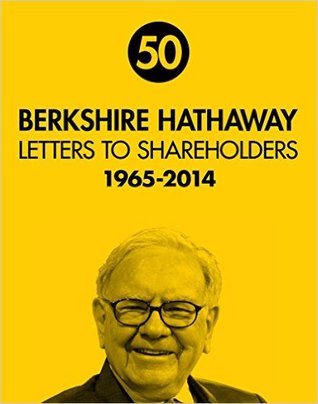More on this book
Community
Kindle Notes & Highlights
Read between
January 21 - August 26, 2018
We are highly pleased with the results of our insurance subsidiaries since their acquisition in March 1967.
All earnings of the insurance subsidiaries are being retained to build additional capital strength.
Management’s objective is to achieve a return on capital over the long term which averages somewhat higher than that of American industry generally—while utilizing sound accounting and debt policies.
Our equity investments are heavily concentrated in a few companies which are selected based on favorable economic characteristics, competent and honest management, and a purchase price attractive when measured against the yardstick of value to a private owner.
With this approach, stock market fluctuations are of little importance to us—except as they may provide buying opportunities—but business performance is of major importance.
Our objective is a conservatively financed and highly liquid business—possessing extra margins of balance sheet strength consistent with the fiduciary obligations inherent in the banking and insurance industries—which will produce a long term rate of return on equity capital exceeding that of American industry as a whole.
You will notice that our major equity holdings are relatively few. We select such investments on a long-term basis, weighing the same factors as would be involved in the purchase of 100% of an operating business: (1) favorable long-term economic characteristics; (2) competent and honest management; (3) purchase price attractive when measured against the yardstick of value to a private owner; and (4) an industry with which we are familiar and whose long-term business characteristics we feel competent to judge.
The primary test of managerial economic performance is the achievement of a high earnings rate on equity capital employed (without undue leverage, accounting gimmickry, etc.) and not the achievement of consistent gains in earnings per share. In our view, many businesses would be better understood by their shareholder owners, as well as the general public, if managements and financial analysts modified the primary emphasis they place upon earnings per share, and upon yearly changes in that figure.


